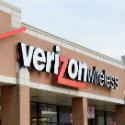Based on new findings from Bernstein, 4% of Chicagoans can subscribe to Verizon's 5G Home. That, they said, indicates the service poses a 'significant competitive risk to cable's broadband hegemony.'

Verizon's 5G fixed wireless Internet service is growing into a "strong niche business," according to a new report by the financial analysts at Sanford C. Bernstein & Co., LLC, and it now has the potential to pose a "significant competitive risk to cable's broadband hegemony."
The Bernstein analysts derived their conclusions from a recent survey of Verizon's 5G Home buildout efforts in Chicago, where Verizon has been offering the service for more than a year. In a December 15 note to investors, the analysts said they had recently sampled 500 addresses across Chicago to see whether Verizon's 5G Home service was accessible.
Based on their findings, the analysts estimated that 5G Home was available to 37% of addresses in The Loop, Chicago's commercial downtown core covering 1.6 square miles and around 37,000 people.
"37% seems to communicate confidence in the service, but likely indicates much more work and capital to reach target coverage levels (we imagine >60%)," the analysts wrote. Verizon's 5G Home service runs over the operator's millimeter wave (mmWave) spectrum, which can transmit enormous amounts of data but is hamstrung by propagation characteristics that limit its coverage area to just a few thousand feet. Thus, Verizon must deploy small cell transmitters on virtually every street corner to cover large geographic areas.
"We think permits, fiber and line of sight are the gating factors and solvable problems at which Verizon will grind away in the most dense, affluent neighborhoods," the analysts wrote.
However, outside The Loop – which accounts for just 1.3% of Chicago's population – things were much different. The analysts said that Verizon's 5G Home was accessible to just 3% of the homes outside The Loop in its survey. Based on the firm's findings, the Bernstein analysts estimated that roughly 4% of Chicagoans could subscribe to 5G Home.
"If 5G Home availability (passings) in today's 5G Home markets soon approximates the 4% we estimate for the City of Chicago, then 600,000 homes may soon have access to 5G Home," they wrote. "We expect 5G Home passings to grow rapidly each month given Verizon's recent statement that it is deploying 'thousands of small cells per month.' Using 600,000 as a year-end 2020 estimate and assuming that the average small cell passes 30 homes, we would not be surprised to learn of year-end 2021 passings near 2 million."
The analysts said their findings changed their attitude toward Verizon's 5G Home service, which they said damaged Verizon's credibility with "an ugly false start" in 2018. Although Verizon officials have described 5G Home as a "transformative" business for the company, they also essentially paused the rollout of the service until the second half of last year, when Verizon upgraded the offering with new antennas and chipsets from Qualcomm and a self-installation process for customers.
Over the next five to seven years, Verizon hopes to expand the offering to fully 30 million US households, or around 38% of the entire US population. Verizon officials reiterated late last year that the company expects to begin recording meaningful revenues from 5G Home starting in 2021. The service represents a direct challenge by Verizon to cable companies like Comcast and Charter, which have long dominated growth in the market for fixed broadband services in urban areas.
Related posts:
— Mike Dano, Editorial Director, 5G & Mobile Strategies, Light Reading | @mikeddano
About the Author(s)
You May Also Like











